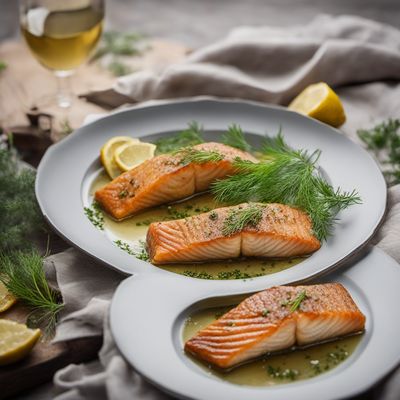
Ingredient
Carp, common
The Versatile Delicacy: Unveiling the Secrets of Common Carp
Common carp, scientifically known as Cyprinus carpio, is a freshwater fish with a streamlined body and large scales. It has a firm, white flesh that is slightly sweet and mild in flavor. The texture of the meat is tender yet firm, making it suitable for various cooking methods such as baking, grilling, frying, or poaching. The fish has a distinctive appearance with a dark olive-green or brownish color on its back and sides, fading to a lighter shade on the belly. Its scales are large and shiny, adding to its visual appeal.
Origins and history
Common carp originated in Asia, particularly in China and surrounding regions. It has a rich historical background, dating back over 2,000 years. Carp farming was practiced in ancient China, and the fish was highly valued for its ability to adapt to different environments and its delicious taste. Over time, carp spread to other parts of the world, including Europe, where it became an important food source during the Middle Ages. Today, carp is cultivated and consumed in many countries, with each region adding its own unique culinary twist.
Nutritional information
Common carp is a nutritious ingredient, rich in protein, vitamins, and minerals. It is a good source of omega-3 fatty acids, which are beneficial for heart health. A 100-gram serving of cooked carp provides approximately 127 calories, 20 grams of protein, and 4 grams of fat.
Allergens
Common carp may cause allergic reactions in individuals with fish allergies.
How to select
When selecting common carp, look for fish that have clear, bright eyes, shiny scales, and a fresh, mild aroma. The flesh should be firm to the touch and have a vibrant color. Avoid fish with a strong fishy smell or signs of discoloration.
Storage recommendations
To maintain the freshness and quality of common carp, store it in the refrigerator at a temperature below 40°F (4°C). It is best to consume the fish within 1-2 days of purchase. If you plan to store it for a longer period, consider freezing it in airtight packaging.
How to produce
Common carp can be grown in ponds or tanks, making it suitable for amateur aquaculture. It requires clean water, proper feeding, and adequate space to thrive. Consult local fish farming experts or resources for detailed guidance on carp production.
Preparation tips
Before cooking common carp, it is recommended to remove the scales, gut the fish, and rinse it thoroughly. The fish can be prepared in various ways, such as marinating it with herbs and spices before grilling, baking it with a flavorful sauce, or frying it to achieve a crispy exterior. To enhance the flavor, consider adding citrus zest, garlic, or fresh herbs during the cooking process.
Culinary uses
Common carp is widely used in various cuisines around the world. It can be prepared as a main course, either grilled, baked, or fried. In some cultures, carp is traditionally used in soups or stews, adding depth of flavor to the dish. The fish can also be pickled or smoked, creating unique and delicious flavors.
Availability
Common carp is commonly available and cultivated in many countries, including China, Europe, the United States, and parts of Asia.
More ingredients from this category

Goldfish
The Delightful Fish-Shaped Snack

Carp, indian (generic)
The Versatile Indian Fish

Crucian carp
The Versatile Delicacy of Crucian Carp

Labeo carps (generic)
The Versatile Carp Family

Black carp
The Mighty Black Carp

Silver carp
The Versatile Silver Carp

Carp, grass
The Versatile Carp: Exploring the Culinary Potential of Grass Carp

Catla
The Mighty Catla: A Versatile Ingredient

Bighead carp
The Charming Chub

Mud carp
The Versatile Mud Carp: A Culinary Delight

